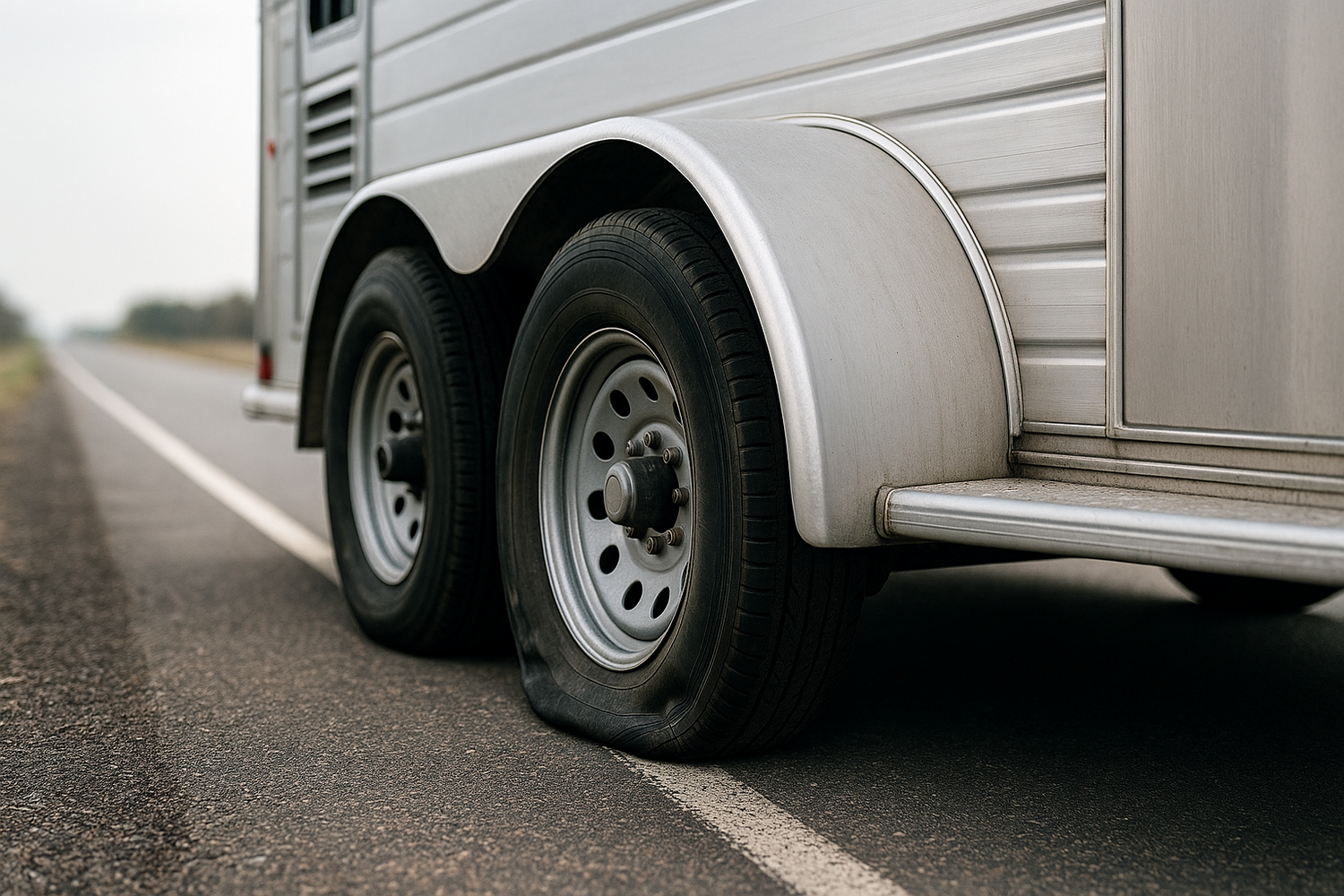In today's world of vehicle safety, understanding Tire Pressure Monitoring Systems (TPMS) is essential for every trailer owner. A TPMS is an electronic system that monitors the air pressure inside your vehicle's tires. Maintaining optimal tire pressure is crucial not only for fuel efficiency but also for ensuring the overall safety of your trailer during transit.
There are two main types of TPMS: Direct TPMS and Indirect TPMS. Direct TPMS uses sensors mounted on each tire to measure pressure and temperature in real-time, providing accurate data directly to the driver. On the other hand, Indirect TPMS estimates tire pressure using the vehicle's ABS (Anti-lock Braking System) sensors, which can be less precise but still provides essential information to prevent under-inflation.
Adding a TPMS to your trailer can significantly enhance safety by alerting you to any pressure abnormalities before they lead to catastrophic failures. Some of the key benefits include:
- Increased Safety: Early warnings allow for timely responses to tire issues, reducing the risk of blowouts.
- Improved Fuel Efficiency: Properly inflated tires enhance fuel economy, saving you money in the long run.
- Extended Tire Life: Monitoring tire pressure helps prevent uneven wear and prolongs the lifespan of your tires.
Considering these benefits, the question arises: can you add a tire pressure monitoring system to your trailer? The answer is yes, and the process is often straightforward. With a little research, you can find systems tailored for your trailer type.
Tow with peace of mind, knowing that trailerwatchdog is standing guard.
Benefits of Adding a Tire Pressure Monitoring System

Adding a Tire Pressure Monitoring System (TPMS) to your trailer comes with a multitude of benefits that can significantly enhance your towing experience. Understanding these advantages can help you make an informed decision about equipping your trailer with this vital technology.
One of the primary benefits of a TPMS is enhanced safety. By continuously monitoring tire pressure, the system alerts you to any irregularities, allowing you to address potential tire issues before they escalate into dangerous situations, such as blowouts or loss of control while towing.
Another important advantage is fuel efficiency. Properly inflated tires ensure optimal contact with the road, leading to better fuel economy. Under-inflated tires can increase rolling resistance, which means the engine has to work harder, consuming more fuel. By maintaining the correct tire pressure, you not only save money on fuel but also contribute to reducing your carbon footprint.
Additionally, a TPMS can help extend the lifespan of your tires. Regular monitoring allows you to catch issues such as uneven wear or under-inflation early on, which can lead to longer-lasting tires. This proactive approach saves you money on tire replacements and reduces the frequency of maintenance.
Lastly, installing a TPMS can enhance your overall towing experience by providing peace of mind. Knowing that your tires are in optimal condition allows you to focus on the road and your journey ahead, rather than worrying about potential tire failures.
Types of Tire Pressure Monitoring Systems Available
When considering the addition of a Tire Pressure Monitoring System (TPMS) to your trailer, it's essential to understand the different types available on the market. Each system has its unique features and advantages, catering to various needs and preferences.
The two main types of TPMS are direct TPMS and indirect TPMS.
- Direct TPMS: This type utilizes pressure sensors located within each tire. These sensors continuously monitor the tire pressure and relay the information to a display unit inside the vehicle. Direct TPMS provides real-time data, allowing for immediate detection of any pressure loss. This system is known for its accuracy and reliability, making it a popular choice among trailer owners who prioritize safety.
- Indirect TPMS: Instead of using pressure sensors, indirect TPMS relies on the vehicle's anti-lock braking system (ABS) to monitor tire pressure. It detects changes in wheel speed, which can indicate low tire pressure. While this system is generally less expensive than direct TPMS, it may not provide the same level of precision. Indirect TPMS is often found in vehicles as a standard feature, but it may require recalibration after tire rotation or replacement.
Additionally, there are aftermarket TPMS solutions that can be added to existing trailers. These systems come in both direct and indirect configurations and can be customized to fit various trailer models. They often feature user-friendly interfaces and smartphone connectivity, allowing for convenient monitoring on the go.
Understanding the various types of TPMS can help you choose the right system for your trailer, ensuring optimal safety and performance while towing.
Installation Process for Tire Pressure Monitoring Systems

Installing a Tire Pressure Monitoring System (TPMS) can greatly enhance your trailer's safety and performance. The installation process may vary depending on the type of TPMS you choose—whether it's a direct or indirect system. Below, we outline a general guide to help you understand the installation process.
1. Gather Necessary Tools and Equipment: Before starting the installation, ensure you have all the required tools at hand. This typically includes a tire pressure gauge, a wrench, a screwdriver, and any specific tools recommended by the TPMS manufacturer.
2. Remove Tires if Necessary: For direct TPMS installation, you may need to remove the tire to access the valve stems where the sensors will be installed. Ensure the trailer is securely jacked up and supported to prevent accidents.
3. Install the Sensors: For direct systems, attach the pressure sensors to the valve stems. Make sure they are securely fastened, as these sensors must withstand road vibrations and impacts. If you're installing an indirect system, follow the manufacturer’s instructions to connect the system to your vehicle's ABS or onboard computer.
4. Connect the Display Unit: Install the display unit inside the trailer or towing vehicle, making sure it's easily visible to the driver. This unit will receive data from the sensors and alert you of any pressure issues.
5. Calibrate the System: After installation, it’s essential to calibrate the system according to the manufacturer's instructions. This may involve setting the correct tire pressures and ensuring that the system is functioning correctly.
6. Test the System: Once everything is installed and calibrated, conduct a test drive to ensure the TPMS is working as expected. Monitor the display for any alerts and verify that all tires are reading correctly.
By following these steps, you can effectively install a TPMS that will help you keep your trailer in optimal condition, providing peace of mind on your journeys.
Common Challenges and Solutions When Adding Systems

Adding a Tire Pressure Monitoring System (TPMS) can significantly improve your trailer's safety and efficiency; however, there are common challenges that users may face during the process. Understanding these challenges and their solutions can help streamline the installation and ensure optimal functionality.
1. Compatibility Issues: One of the most common challenges is ensuring that the TPMS you choose is compatible with your trailer model. Before purchasing, check the specifications and consult the manufacturer to confirm compatibility with the trailer's existing systems.
Solution: Research different TPMS options and consider contacting customer support from the manufacturer. They can provide insights into suitable models for your specific trailer.
2. Sensor Malfunctions: Sensors can occasionally malfunction, leading to incorrect readings or false alerts. This can be caused by battery failure, damage during installation, or environmental factors.
Solution: Regularly check and maintain the sensors. Ensure they are securely attached, and replace batteries as needed. If you encounter persistent issues, consult the manufacturer for troubleshooting steps or replacements.
3. Calibration Difficulties: Proper calibration is crucial for accurate monitoring. Some users may struggle with the calibration process, leading to inconsistent readings.
Solution: Follow the manufacturer’s instructions carefully during calibration. If uncertainties arise, consider watching instructional videos or contacting customer support for guidance.
4. Display Unit Visibility: The location of the display unit can sometimes hinder visibility, making it difficult for the driver to monitor tire pressure effectively.
Solution: Choose a mounting location that allows for easy visibility without obstructing the driver’s view. Experiment with different positions during installation to find the most effective spot.
By being aware of these common challenges and their solutions, you can better prepare yourself for a successful TPMS installation, helping to ensure your trailer remains safe and roadworthy.
Maintaining Your Tire Pressure Monitoring System

Once you have successfully added a Tire Pressure Monitoring System (TPMS) to your trailer, it’s essential to maintain it to ensure its longevity and reliability. Proper maintenance not only enhances the performance of the system but also contributes to the safety and efficiency of your travels.
1. Regular Inspections: Schedule routine checks of the TPMS sensors and display unit. Look for any signs of wear, damage, or corrosion, especially on sensors that are exposed to harsh weather conditions. Regular inspections can help identify potential issues before they escalate.
2. Battery Management: Most TPMS sensors are battery-operated. Keep an eye on the battery levels of your sensors and replace them as needed. A low battery can lead to inaccurate readings or complete sensor failure.
3. Calibration Checks: Periodically recalibrate your TPMS, especially after any tire changes or adjustments. Calibration ensures that the system accurately reflects the current tire pressure and maintains its reliability.
4. Software Updates: If your TPMS has a digital interface or app, check for software updates regularly. Manufacturers often release updates that improve performance, enhance features, or fix bugs.
5. Tire Maintenance: While the TPMS is designed to monitor tire pressure, it’s still crucial to perform regular tire maintenance. This includes visual inspections, maintaining proper inflation levels, and rotating tires as recommended.
By adhering to these maintenance tips, you can ensure that your Tire Pressure Monitoring System remains effective and continues to safeguard your trailer. Tow with peace of mind, knowing that TrailerWatchdog is standing guard. Visit trailerwatchdog.com for more information on how our monitoring system can enhance your trailer's safety.








